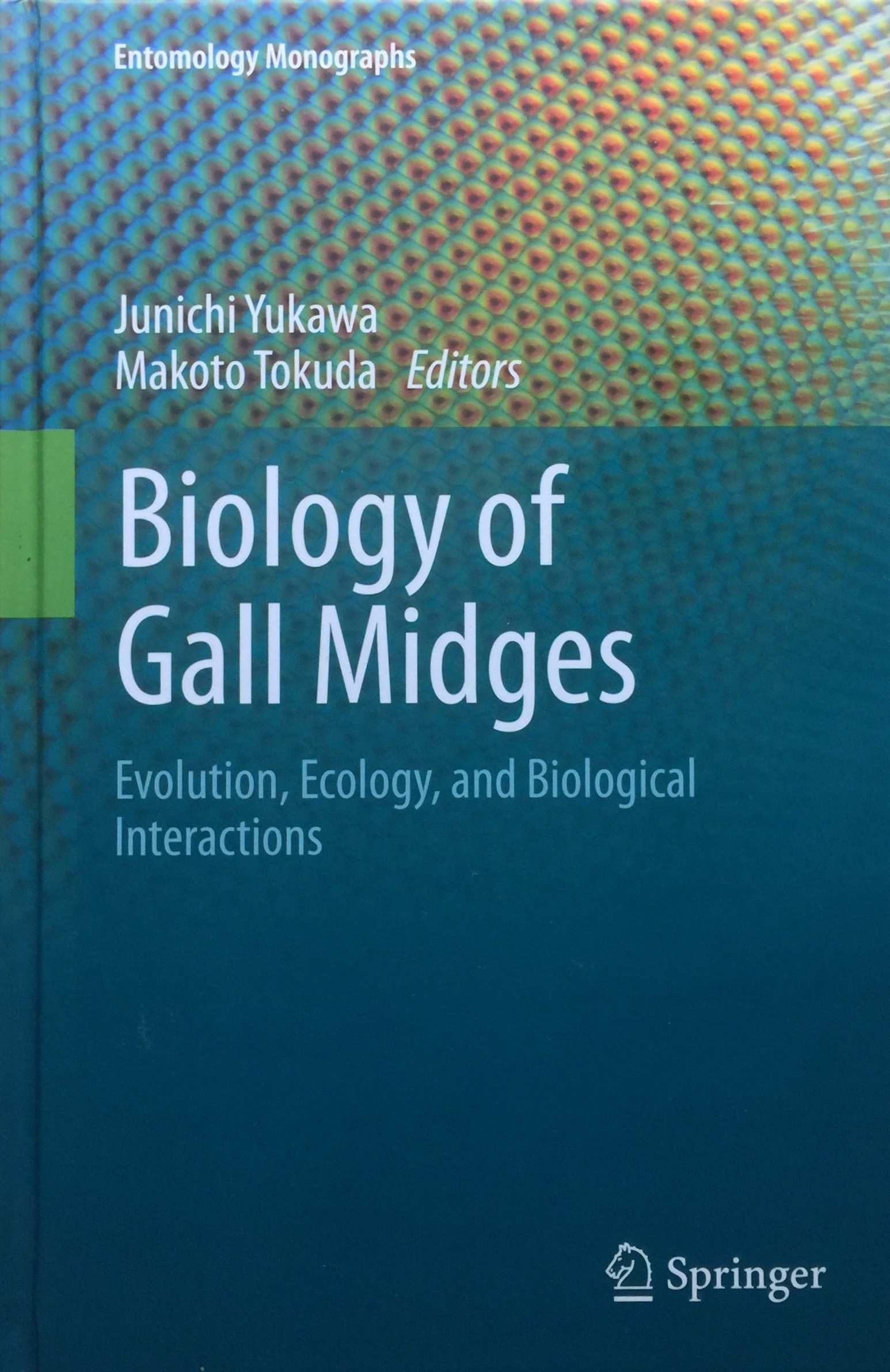Biodiversity Biological recording & species identification Data & bioinformatics
Junichi Yukawa & Makoto Tokuda (editors)
Springer
2021
ISBN: 9789813365339
Reviewed by Graham Stone
In all the rich panoply of insect taxa, it is hard to find a group more biology diverse than the 7,000 species in the dipteran family Cecidomyiidae. This book focusses on the estimated thousands of species in this family, commonly known as gall midges, that induce galls in plant tissues. Many insect groups are able to induce galls (including gall wasps and galling aphids, for example), but the gall midges are both the most species-rich group, and gall the greatest diversity of host plants. This biological richness, and the convenience of galls as natural ecological microcosms, has made gall midges attractive subjects for study in many areas of biology, and they are economically important as plant pests and (in non-galling forms) biological control agents.
This book surveys gall midge biology in 13 chapters spanning taxonomy and phylogeny, adaptive radiation, island biogeography, behaviour, host plant associations, reproductive and life history strategies, and associated communities of natural enemies and inquilines. The final section of the book considers invasive and beneficial species. The editors, who also contribute to all of the book’s 13 chapters, are world authorities on gall midges, and many of the examples discussed in this book (with an extensive bibliography) are drawn from their own research in Japan and Southeast Asia. General concepts are also well-illustrated with gall midge examples from other biogeographic regions and, where appropriate, from other gall-inducing taxa. Most chapters also highlight knowledge gaps and possible targets for future research. The text includes many informative summary tables and brief overviews of key taxa that provide a structured and accessible introduction to gall midge biology, and the text is full of fascinating nuggets. Several of the chapters provide practical recommendations for those interested in working on gall midges. All of this is provided in a concise 300-page package.
While the price tag will be steep for some, this would be a valuable addition to any entomological library and is well worth it for those interested in plant galls.


